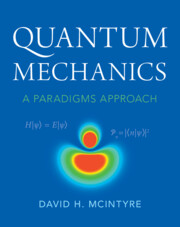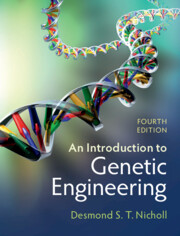Refine search
Actions for selected content:
36807 results in Cambridge Textbooks
6 - Contracts: performance and remedies
-
-
- Book:
- Contemporary Australian Business Law
- Published online:
- 14 February 2023
- Print publication:
- 14 February 2023, pp 126-149
-
- Chapter
- Export citation
Contents
-
- Book:
- Contemporary Australian Business Law
- Published online:
- 14 February 2023
- Print publication:
- 14 February 2023, pp v-xiv
-
- Chapter
- Export citation
8 - Employment law
-
-
- Book:
- Contemporary Australian Business Law
- Published online:
- 14 February 2023
- Print publication:
- 14 February 2023, pp 180-196
-
- Chapter
- Export citation
10 - Personal property
-
-
- Book:
- Contemporary Australian Business Law
- Published online:
- 14 February 2023
- Print publication:
- 14 February 2023, pp 227-246
-
- Chapter
- Export citation
Index
-
- Book:
- Contemporary Australian Business Law
- Published online:
- 14 February 2023
- Print publication:
- 14 February 2023, pp 502-513
-
- Chapter
- Export citation
7 - Competition and consumer law
-
-
- Book:
- Contemporary Australian Business Law
- Published online:
- 14 February 2023
- Print publication:
- 14 February 2023, pp 150-179
-
- Chapter
- Export citation
About the authors
-
- Book:
- Contemporary Australian Business Law
- Published online:
- 14 February 2023
- Print publication:
- 14 February 2023, pp xv-xvi
-
- Chapter
- Export citation
2 - Civil liability and the tort of negligence
-
-
- Book:
- Contemporary Australian Business Law
- Published online:
- 14 February 2023
- Print publication:
- 14 February 2023, pp 21-53
-
- Chapter
- Export citation
12 - Insurance
-
-
- Book:
- Contemporary Australian Business Law
- Published online:
- 14 February 2023
- Print publication:
- 14 February 2023, pp 275-302
-
- Chapter
- Export citation
13 - Business structures
-
-
- Book:
- Contemporary Australian Business Law
- Published online:
- 14 February 2023
- Print publication:
- 14 February 2023, pp 303-339
-
- Chapter
- Export citation
Acknowledgement of Country
-
- Book:
- Contemporary Australian Business Law
- Published online:
- 14 February 2023
- Print publication:
- 14 February 2023, pp ii-ii
-
- Chapter
- Export citation
Table of cases
-
- Book:
- Contemporary Australian Business Law
- Published online:
- 14 February 2023
- Print publication:
- 14 February 2023, pp xviii-xxxii
-
- Chapter
- Export citation
Acknowledgements
-
- Book:
- Contemporary Australian Business Law
- Published online:
- 14 February 2023
- Print publication:
- 14 February 2023, pp xvii-xvii
-
- Chapter
- Export citation
11 - Secured transactions
-
-
- Book:
- Contemporary Australian Business Law
- Published online:
- 14 February 2023
- Print publication:
- 14 February 2023, pp 247-274
-
- Chapter
- Export citation
1 - The Australian legal system
-
-
- Book:
- Contemporary Australian Business Law
- Published online:
- 14 February 2023
- Print publication:
- 14 February 2023, pp 1-20
-
- Chapter
- Export citation
Abbreviations
-
- Book:
- Contemporary Australian Business Law
- Published online:
- 14 February 2023
- Print publication:
- 14 February 2023, pp lii-liv
-
- Chapter
- Export citation
3 - Contracts: formation
-
-
- Book:
- Contemporary Australian Business Law
- Published online:
- 14 February 2023
- Print publication:
- 14 February 2023, pp 54-70
-
- Chapter
- Export citation
14 - Corporations
-
-
- Book:
- Contemporary Australian Business Law
- Published online:
- 14 February 2023
- Print publication:
- 14 February 2023, pp 340-393
-
- Chapter
- Export citation

Quantum Mechanics
- A Paradigms Approach
-
- Published online:
- 11 February 2023
- Print publication:
- 15 September 2022
-
- Textbook
- Export citation

An Introduction to Genetic Engineering
-
- Published online:
- 10 February 2023
- Print publication:
- 02 March 2023
-
- Textbook
- Export citation
